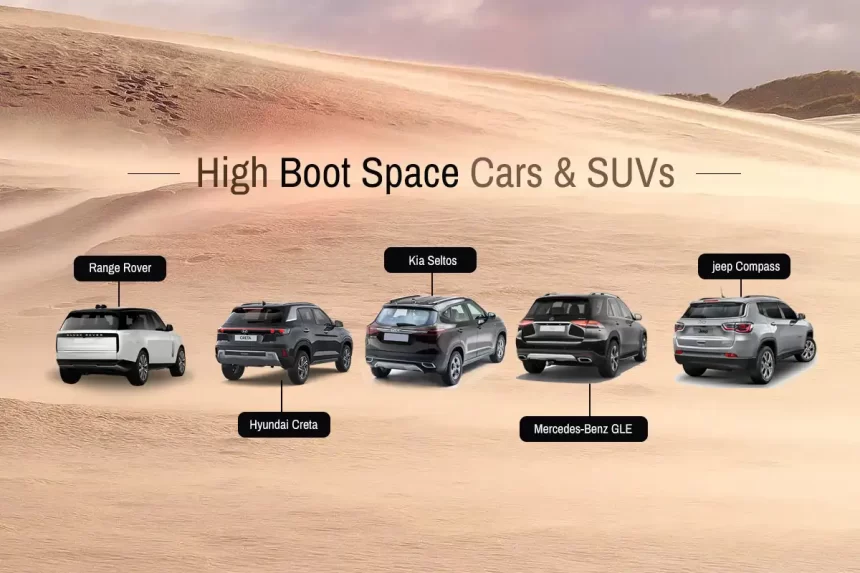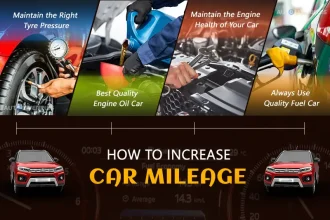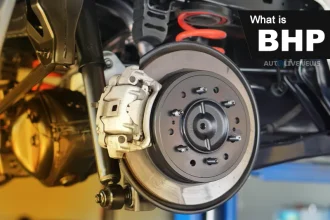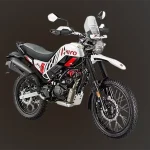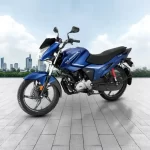While shopping for a car, you may encounter a lot of new terminology. Along with body types (hatchback vs. sedan vs. SUV) and safety features (ISOFIX, ADAS, ADS), you may also come across the term ‘boot space’ pretty frequently. So what is boot space in car and why is it important? Let’s find out.
Boot space, also called trunk space, is the compartment in the car’s rear that you use to store your things while traveling. You can keep a wide variety of things in your car boot, from luggage to groceries and equipment. Usually, you access boot space through a hinged opening. This opening may be hinged either to the top or the bottom.
The boot is usually separate from the passenger seating area. It may be separated due to the car’s body structure (sedans) or by a removable tray or roll-up cargo cover (hatchbacks and SUVs). Boot space refers to the amount of storage space in the boot. It is usually calculated in liters or cubic feet.
What is Boot Space in Car Also Called?
What is boot space in car called today? ‘Boot’ is a commonly accepted term and originated from British English. While car boot openings are usually hinged at the top (called a hatch), sometimes the opening is hinged at the bottom instead. This type of boot is usually called a ‘tailgate’. Tailgates are popular in the US and commonly feature on station wagons, pickup trucks, and SUVs. In Southeast Asia, the boot area is called a compartment.
Is a car trunk the same as the boot? Yes, those are different names for the same part of the car. ‘Trunk’ is an American term and is not as commonly used. The term ‘trunk’ originated from large traveling chests called trunks, which were attached to the rear of most American vehicles. This was before integrated storage compartments were introduced in the 1930s. Since people would use the attached ‘trunk’ to store luggage, the name stuck even after the physical trunk disappeared from the car.
Did You Know?
In India, the word ‘dickie’ dates back to the pre-independence era. Originally, some cars would be equipped with foldable rear seating called a rumble seat. The British word for rumble seats was ‘dickie’ or ‘dicky’, which had been used to refer to certain seats in horse-drawn carriages. A dickie seat usually meant a small seat in the carriage, used to seat servants and store luggage.
The name ‘dikki’ or ‘dicky’ stuck even after the Britishers stopped using it. Many Indians colloquially refer to the boot as the ‘car dicky’, though the word’s usage has dwindled in recent years.
Are Front Storage Areas Called Boots?
Some cars substitute the rear boot for a storage compartment at the front of the car. Examples include rear-engine cars like the Porsche 911 and the discontinued Nano. Many EVs come with a front storage area, as unlike an engine, their powertrain isn’t located in the front. This space is commonly called a ‘frunk’, an amalgamation of front and trunk. It is sometimes also called a ‘froot’, a portmanteau of front and boot.
Frunks are rarely called boots in order to avoid confusion. The Tata Punch EV and Kia EV6 come with both a boot and a frunk. In order to figure out what is boot space in car like, we have to take into account both the boot space and the frunk space in cars that have both. Frunks are generally smaller than boots.
Did You Know?
The Ford F-150 Lightning pickup truck has one of the biggest frunks in the world! Its frunk is equipped with LED lighting, two USB chargers, four electrical outlets, and a drain plug too. It has a capacity of 14.1 cubic feet or 400 liters.
A Bigger Car Means A Bigger Boot, Right?
Not really. While lots of large cars have larger boots, the boot space varies from model to model, and some small cars may have more boot space than much larger cars. You’ll understand what is boot space in car like when you see it in person and pay attention to boot space while looking at car spec sheets.
For example, many small hatchbacks have larger boots than 7-seater SUVs. Since these large SUVs have to be comfortable for passengers, the seating space takes priority, and the boot may only have 100-200 liters of cargo space.
However, there are still 7-seater SUVs like the Toyota Innova and Mahindra Bolero that have a good amount of boot space. Since it can vary from model to model, paying attention to the boot space mentioned on websites or in brochures will help you understand what is boot space in car like.
Also read: What is an SUV? Pros, Cons, and More!
What is Boot Space in Car: What Can Reduce Boot Space?
Some cars may have certain components or equipment built in, which may reduce the cargo capacity of the boot. These include rear shelves, tool kits for repairs, a first aid kit, additional third-row seating, fuse boxes, electronic components for audio, video, or navigation systems, etc. While some components may be hidden from site and concealed below the carpet or in hatches below the boot, others, like an optional sound system, might occupy the boot itself.
Did You Know?
‘Car boot sales’ are a popular type of market in the United Kingdom. The name comes from the practice of selling the goods from the boot of the car. Most people at car boot sales sell personal possessions or unused household and garden goods. Boot sales prevent waste and encourage thriftiness in communities.
What is Boot Space in Car: How is Boot Space Measured?
In India, car boot space is typically measured in liters. This is because the boot is irregularly shaped with lots of hard corners and curves. Since it isn’t a perfect cube, storage space inside is difficult to calculate. The volume of the boot in liters can tell us roughly how much the total capacity of the boot is.
So now you know what is boot space in car, and that it is an important car statistic that you should pay attention to. Let’s move on to how boot space is measured and how you can distinguish cars with large boot space from others. There are two ways to calculate boot space: the widely-used VDA method or the SAE method.
The VDA Method:
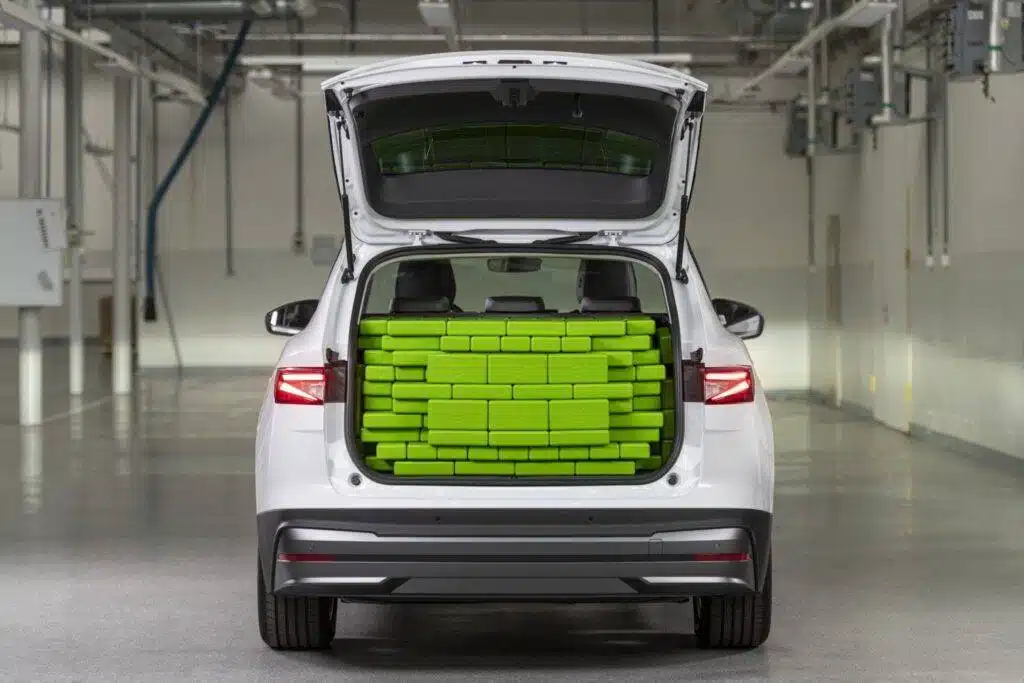
This method was first published by the German Association of the Automotive Industry (VDA) and later became part of the international ISO 3832 standard. In this method, blocks measuring 200x100x50 mm with a volume of 1 liter are stacked by hand in the car’s boot.
There are certain rules to follow, such as forcing the block in isn’t allowed, and how far the blocks can go is limited. The total number of bricks that fit in the boot is used to calculate the cargo volume. This provides a solid estimate of usable boot space.
The SAE Method
The SAE method is an American method devised by the Society of Automotive Engineers. The SAE J1100 standard is a bit more complicated. For cars with ‘enclosed storage’ like sedans, the SAE method uses boxes of different sizes that are meant to stimulate actual luggage.
In order to find out what is boot space in cars with ‘open areas’ like hatchbacks and SUVs, the volume is calculated using the boot’s dimensions. Since they can also use small boxes to fit in nooks and crannies, the SAE measurements are often larger than VDA numbers. But this number may not reflect how much usable boot space the car has.
Some manufacturers may include the boot dimensions in the car brochure, but this may not always be the case.
What is Boot Space in Car: How to Compare Different Models
Make sure that you aren’t comparing VDA volumes with SAE numbers. While generally, a larger volume indicated more space, it may not always be the case. If you’re planning to carry a stroller or wheelchair around, it would be a good idea to make sure that they can fit in the boot before you make your car purchase.
Also read: The Most Practical Car Body Type For You
Why is Boot Space Important?
What is boot space in car good for? Having enough boot space is very important for a variety of reasons. People who travel or shop frequently will need more boot space than those who only use their car for commuting. If you think you’ll be satisfied with low boot space, go through the following points to discover how important it is.
Travel Without Hassle:
- Whether you’re traveling alone or with a family of four, larger boot space will allow you to carry all your luggage and have space to bring back shopping and souvenirs. No need to travel light or stop yourself from buying that luxurious Jaipuri razai!
When Adventure Calls:
- If you’re a camping, off-roading, or exploring type of person, you need a lot of boot space for sure. Carry your skis, fishing gear, camping equipment, surfboards, kayaks, bicycles, or even portable barbecue grills with ease and have fun in the great outdoors!
Taking Road Trips:
- Perhaps not as challenging as off-roading, but equally as cargo-heavy, a road trip is a popular vacation style that appeals to everyone. Whether you’re a regular road tripper or about to start your own Zindagi Na Milegi Dobara-style adventure, a car with a large boot will be the perfect road trip companion.
Airport Chaffeur:
- Even if you aren’t much of a traveler, chances are that you know someone who is. While dropping off friends and family or picking them up from the airport, a large boot will accommodate all their suitcases and duty-free shopping bags.
Pet-a-Porter:
- Have pets you’d like to travel with? A big boot is what you need. Dogs are typically uncomfortable on car seats. A spacious and flat surface would be more suitable to accommodate them. As long as the dog or cat isn’t too big, you can comfortably carry them in a hatchback or SUV and fold down the rear seats for more open space.
Transporting Equipment for Hobbies, Sports, and More:
- Do you play cricket, golf, or a sport of some sort? You can easily carry all your sports gear and fitness equipment if your car has a large boot space. You can also store items you may need for hobbies or tools you use for work.
Event Planner Extraordinaire:
Planning a baby shower or a birthday party? It would be more convenient to carry all the decorations and supplies in a single car rather than transporting them in multiple vehicles. If you’re someone who loves throwing parties, you’ll appreciate a large boot space to carry home all those snacks and drinks.
Move Over, Packers and Movers:
If you move homes frequently for work or travel, a car with large boot space eliminates the need to hire a moving company every time. Carry everything with you and don’t worry about your belongings getting damaged or lost in transit!
Shop and Store More:
With a large boot, you can complete your grocery shopping at once without having to make multiple trips to get everything you need. Stock up on everything and carry it home with ease.
More Space for Families:
Families require spacious cars and spacious boots. You will have to carry strollers, school bags, sports equipment, project work, etc. while driving kids. If the boot has enough space, the car’s interior will remain clutter-free and comfortable.
Carpool in Comfort:
If you’re traveling by yourself, you can keep extra luggage on the rear or passenger seats. But when traveling with a lot of people, having a big boot space makes it easier to store all of their bags and belongings.
Health Aids and Mobility Equipment:
A larger boot space will allow you to easily transport medical equipment, wheelchairs, walkers, etc. for those who need it. This will not be possible with a smaller boot, specifically one with smaller dimensions.
Large Items? No Problem!
If your car has a large boot, you can transport any heavy equipment, furniture, building materials, appliances, etc. yourself. So whether you’re carrying plants for your home garden or a new 3D printer for your workstation, a large boot will store everything you need.
What is Boot Space in Car: How to Maximize Boot Space:
What if you didn’t pay attention to what is boot space in car and already bought one that has a small boot? Or your dream car doesn’t have a lot of boot capacity? Here are some tips that you can use to maximize your boot space.
Expand the Boot When You Can:
- If your car has folding rear seats and you’re traveling alone, you can almost double your storage space by folding them down. You could also install a false boot floor, which can store a spare tire and tools separately from the rest of your luggage.
Squeeze in Soft Luggage:
- Soft luggage can be squeezed into tight corners, but a hard suitcase won’t give you as much flexibility. Use a soft suitcase or duffel bag if you aren’t carrying any breakable items.
Don’t Compromise; Organize Your Space:
- Use foldable or collapsible storage solutions such as stackable boxes or buildable drawers. Using transparent storage items will let you see everything easily. Try to make the most of the boot’s vertical space too by using storage nets and carry bins.
Stack it like Tetris:
- Since you want to use your boot space to the max, pay attention to size and shape. Make sure to strategically place each item in a way that space isn’t wasted. Carry smaller bags and items and make sure that there aren’t any gaps or wasted space.
Heavy to the Bottom, Light to the Top:
- Store heavier items at the bottom and lighter or more delicate items at the top. This will ensure that the heavy items don’t crush anything when the car moves over a speedbreaker.
Secure Well:
- Keep fragile items in separate storage boxes. Make sure that they are properly secured and don’t move around when the car is in motion.
Use Every Part of the Boot:
- Some boots have a hidden underfloor compartment, which you can use to store things you don’t need right away.
Move Beyond the Boot:
- Storing small items in the boot can be a hassle. A good solution to this problem is finding alternative storage choices. Hanging organizers, suction hooks, and collapsible storage boxes can provide a lot of easily accessible storage.
Get Additional Storage:
- Sometimes, the boot doesn’t cut it. Avoid cramming things into your boot and look into additional storage options, like a roof rack. Roof-mounted storage can be convenient, but make sure you get it installed by a professional so that it doesn’t exceed legal height, weight, or length limits.
Also read: Increase Car Mileage And Save Money Now With These Easy Tips!
How to Pick a Car With a Good Boot:
A bigger boot volume doesn’t always translate to more storage space. The body type of each car also plays a part in how they store things. For example, convertibles and sports cars don’t get as much boot space as other car types.
Hatchbacks provide more vertical storage space than sedans, due to their higher C pillar. Many hatchbacks also come with folding rear seats. You can stack items more easily in a hatchback thanks to its added height. On the other hand, some sedans have large boots. However, you cannot store longer items easily as they have a sloping roofline and lower seat pillar. Since the boot is a separate compartment, you can’t access a sedan’s boot from inside the car.
Most SUVs have a good amount of boot space, but the capacity varies from model to model. Some SUVs prioritize interior space and may have small boots that can only fit one of two shopping bags. But as most SUVs have foldable rear seats, the boot can be easily expanded.
Let’s take a look at what to keep in mind while picking a car.
Spare Tire Holder:
Some cars come with a tailgate-mounted tire holder or dedicated underboot storage, but most don’t. In case you drive an SUV that utilizes larger tires, carrying a spare tire in the boot will take away some of your boot’s storage space.
Shape and Practicality:
Some boots can have a larger cargo volume than others but hold less luggage. Since we aren’t storing liquid in our boots, the boot space must be shaped practically. Make sure to take a look at the boot’s dimensions to check whether it can fit the items that you might want to carry. Pay attention to the size and angle of the boot opening, the height of the loading floor, any protrusion from the suspension, where the spare tire is kept, etc.
Powered Tailgate:
If you’re someone who does a lot of shopping or you want to make your grocery trips a little bit more convenient, buy a car with a powered tailgate. Some cars even open with gestures or through apps, so you can open the boot with your hands full.
Folding Rear Seats:
Cars with two or three rows of seats are convenient, as you can easily go on trips or carpool when required. Cars with folding rear seats offer even more flexibility, as you can fold down the seats when not in use and carry twice the amount of luggage.
Practical Surfaces:
Take a look at the floor of your boot. Is it a soft surface that fragile items might slip and slide around on? Rubber or carpeted flooring will keep your cargo secure. If the boot doesn’t have good non-slip flooring, find out if you can buy any aftermarket flooring mats or a boot liner.
Adequate Lighting:
This tip isn’t relevant to boot space but will definitely help you pick a car with a practical boot. Opt for models that have boot lamps or lighting, as it will help you while carrying luggage or storing items even when it is dark outside.
Cars With Big Boot Space In India:
Now that we’ve talked about what is boot space in car, how to increase it, and how to pick a car with a practical boot, you must have realized how important it is. We like big boots and we cannot lie. You can’t deny it either: boot space is one of the most important aspects of buying a car.
Here are some large boot space cars in India. The Range Rover tops the list with 818 liters of boot space.

| SUVs | Boot Space |
|---|---|
| Land Rover Range Rover | 818 liters |
| Land Rover Range Rover Sport | 647 liters |
| Mercedes-Benz GLE | 630 liters |
| Jaguar F-Pace | 613 liters |
| MG Hector | 587 liters |
| Citroen C3 Aircross | 444 liters |
| Jeep Compass | 438 liters |
| Hyundai Creta | 433 liters |
| Kia Seltos | 433 liters |
| Tata Harrier | 425 liters |
| Renault Kiger | 405 liters |
| Kia Sonet | 392 liters |
| Hyundai Exter | 391 liters |
| Sedans | Boot Space |
|---|---|
| Hyundai Verna | 528 liters |
| Maruti Suzuki Ciaz | 510 liters |
| Honda City | 506 liters |
| Honda Amaze | 420 liters |
| Tata Tigor | 419 liters |
| Hyundai Aura | 402 liters |
| Maruti Suzuki Dzire | 378 liters |
| Hatchbacks | Boot Space |
|---|---|
| Tata Altroz | 345 liters |
| Maruti Suzuki Wagon R | 341 liters |
| Maruti Suzuki Celerio | 314 liters |
| Renault Kwid | 300 liters |
| Maruti Suzuki Swift | 265 liters |
| Tata Altroz S-CNG (best in CNG cars) | 210 liters |
Frequently Asked Questions:
What is the term for car dikki in English?
Dikki or Dicky is the Indian English term for the rear storage compartment in a car. Dickies are commonly called a ‘boot’ or ‘trunk’.
What is the difference between car boot, dicky, and trunk?
Nothing. All three are different terms used for the rear storage compartment of a car.
Which CNG car with good boot space do you recommend?
The Tata Altroz S-CNG has 210 liters of boot space and is one of the best in its segment.
So, boot space means the space behind the rear seats?
The boot is usually located behind the rear-most seating in your car. If your car has a third row, it is behind the third row seating. Otherwise, it is the space behind the second row seats.
What is cabin boot access?
Cabin boot access refers to being able to access the boot from inside the car without having to open it from the outside. In cars with cabin boot access, the rear seats can be folded down or there is a small opening between the seats through which things can be passed.
Which is the largest boot space SUV in India?
The Land Rover Range Rover and the Mercedes-Benz GLE are some big boot space cars in India.
Can people travel inside the car boot?
Sitting inside the car boot is dangerous and illegal. It is irresponsible to let children ride in the boot, as it can lead to serious injuries or death by suffocation.
Does boot space depend on the car type?
Different car body types will have different boot volumes. Typically, hatchbacks offer greater storage height, sedans offer convenient out-of-sight storage, and SUVs offer large boots with foldable rear seats.



